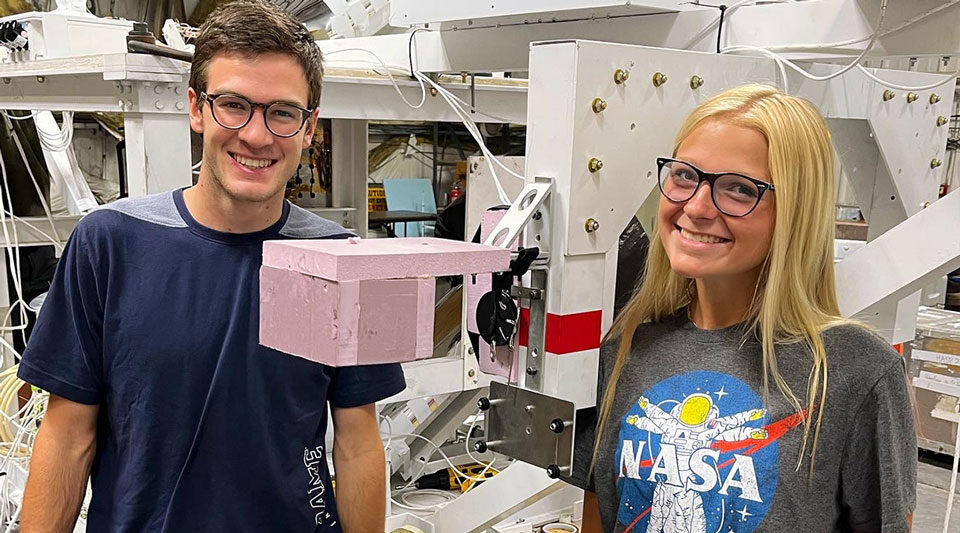IrishSat’s payload guidance and recovery system, Iris, was one of two undergraduate projects selected by NASA for a test flight aboard its balloon-borne astronomical observatory. On August 19, Iris ascended 120,000 feet above the New Mexico desert — a milestone in the development of IrishSat’s satellite technology.


Teams from universities across the country competed in NASA’s FLOATing DRAGON competition to devise the best mechanical and electrical technologies to bring safely back to Earth a hard drive carrying satellite data. NASA’s high-altitude balloons on long-term missions collect more data than can be transmitted efficiently, so reliable and safe ways to drop that data physically are needed.
IrishSat’s design uses a parachute to increase drag and stabilize the payload’s decent in the thin upper atmosphere; a parafoil provides guidance at lower altitudes. Parafoils are wing-shaped, aerial devices used as steerable parachutes or payload delivery systems. Notre Dame engineers were pivotal in developing parafoil technology in the 1960s.
During the summer, Scott Howard, IrishSat faculty mentor and associate professor of electrical engineering, together with the project’s chief engineer, junior Patrick Schwartz, tested and improved Iris by dropping it from a drone at an airstrip near Notre Dame’s campus from heights ranging between 100-300 feet.
Schwartz and junior Sarah Kopfer, the team’s chief technology officer, brought the field-proven Iris to Fort Sumner, New Mexico, in early August to be reviewed and tested by NASA engineers. Critical to Iris’ success would be its ability to drop, on command, from the balloon-borne astronomical observatory known as a gondola.
To demonstrate that the system could deploy at high altitudes, a series of signals had to be sent from NASA’s communications tower and received by Iris as it waited on the ground aboard the gondola. At the end of the successful test, Iris dropped into Kopfer’s arms to a round of applause.


IrishSat will now work with NASA’s Engineering Technology Division to make the system more compact and reliable. A full-scale launch from campus is scheduled for this fall before break.
“Iris is a long-term project for us that has been instrumental in the development of our club and its members,” said Kopfer. “We’ll keep working to make better and better solutions.”
— Karla Cruise, Notre Dame Engineering
